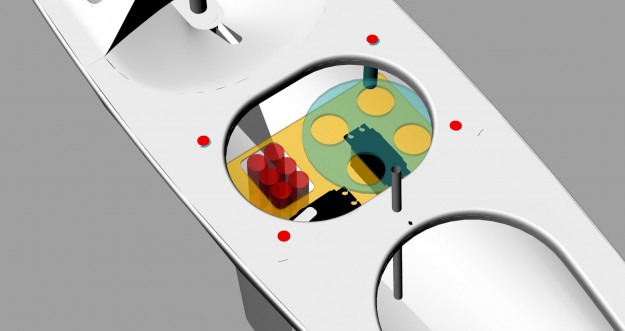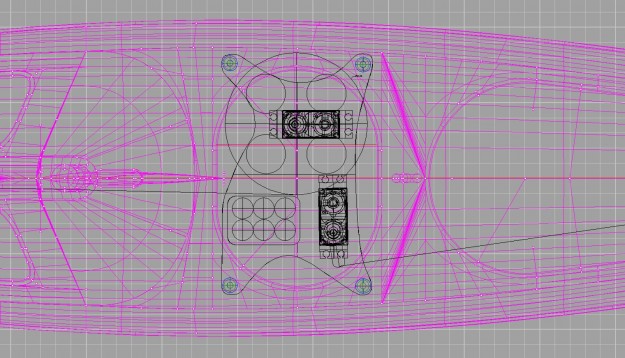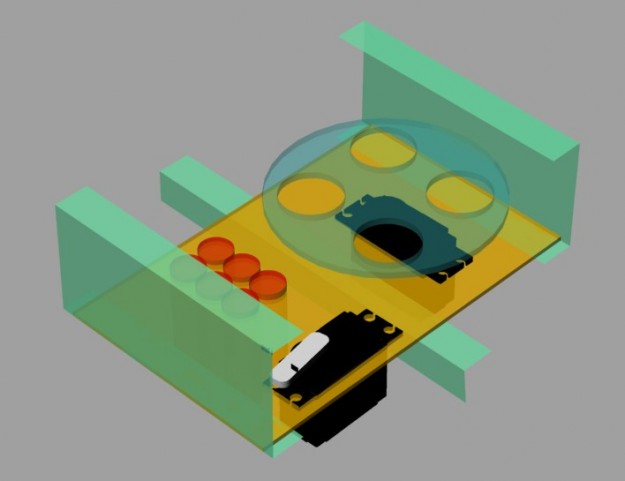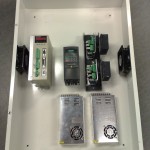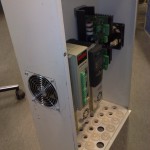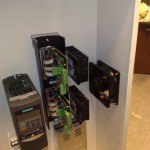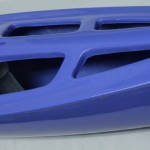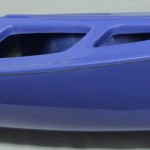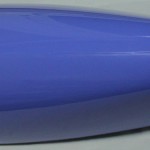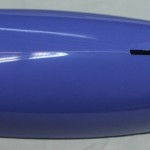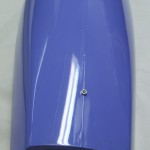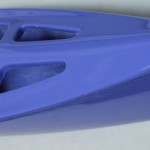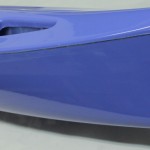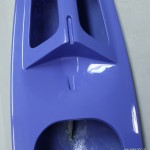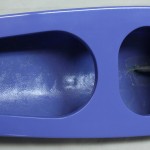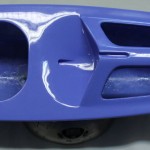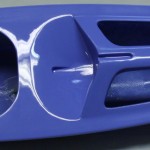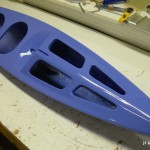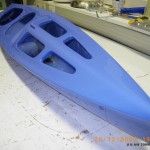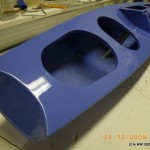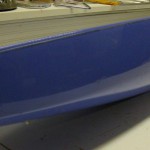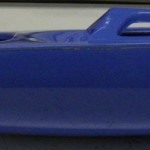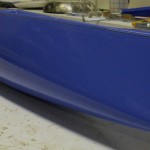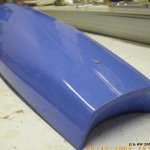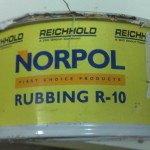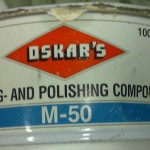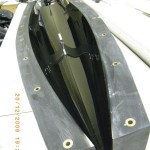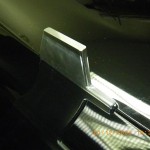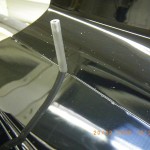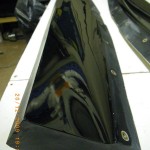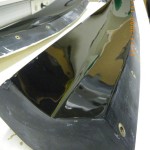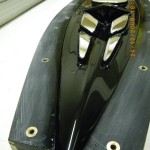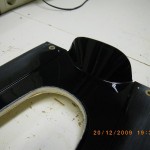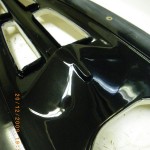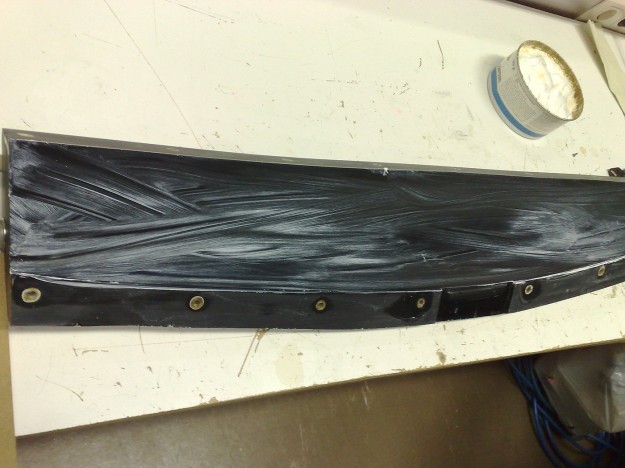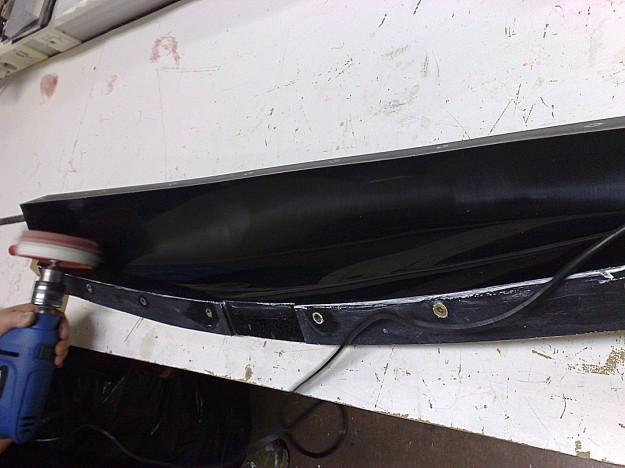Radio installation idea
What's the simplest possible way to install the radio components in the boat?
Here's an idea: Use an FR4 glassfiber PCB-board (yellow) cnc-cut to the correct shape and with cut-outs for the winch, rudder servo, and batteries. Mount it to the deck with long M4 bolts with Y-head screws that mount flush to the deck. Use 50 mm long 10 mm diameter aluminium spacers (blue) to position the plate at the correct height below the deck.
Simple: yes! Works with both HiTec and RMG winch: yes! Easy to manufacture: yes!
Comments?
Update: top view of a shaped radio-board:
Update 2. Here I have drawn 50mm deep U-shaped glassfiber supports that hold the radio-plate from the sides. Also, there is an L-shaped beam which is glued to the finbox and to the sheet-tube which gives additional support to the radio plate:
Lathe Electronics Cabinet
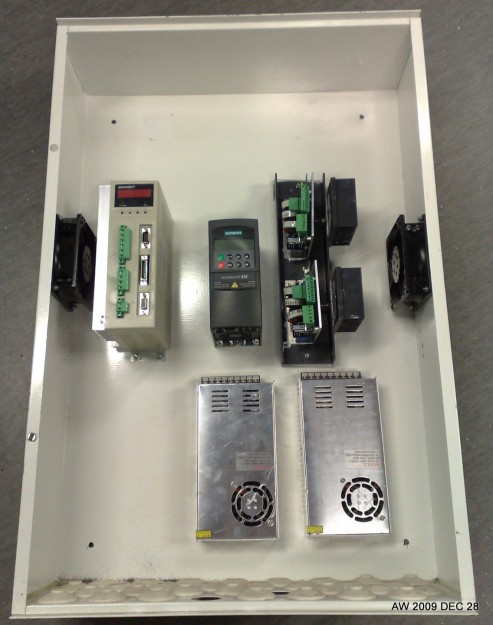
A bit of progress with the electronics cabinet for the lathe. Some components have been bolted to the back wall of the cabinet. From left to right: a Bonmet servo-drive for the main spindle servo, a Siemens VFD for the live-tool spindle motor, and to the right two Brushless PWM amps for the X and Z axis motors from pico-systems. Below these there are two 350W 48VDC switched-mode powersupplies. Today I made holes for two 220VAC 120 mm fans which blow air from both the left and right side into the cabinet directly on the heatsinks of the servo drives. There are plenty of holes in the bottom of the cabinet through which the air can exit.
More PIKANTO hull nr 1 pictures
Some more pictures of hull nr 1. The weight of the hull and deck, including mast/finbox and rudder-tube is 600 g. We hope to improve on that since this prototype hull has a bit too much resin in a lot of places. In 2003 I made this weight-budget for an Italiko, which shows the Italiko hull with fittings and ready for radio-gear weighing 623 grams and requiring more than 100 g of corrector weights.
Hull nr 2 will probably be moulded next weekend, and we hope to make a few changes to the lay-up etc. to produce an even nicer looking boat.
PIKANTO hull Nr 1
We've moulded the first PIKANTO hull!
This is a bit of a prototype since it's some time since Jari or myself moulded a boat, and also because these are brand new moulds and we have never made a boat in one-go like this before: closed mould with the hull, deck, mast/finbox, and ruddertube all attached in one session. We need a bit of routine and practice to get the whole process of "release-agent > gelcoat > resin/fiber > fin/mastobox > close-mould > seal deck-joint" running smoothly. I am sure by hull nr 5 or so we will have learnt the workflow pretty well 🙂
Having said that, this first prototype hull came out of the mould pretty good. There are some problems with an uneven gelcoat layer, and a few places in the foredeck where there is trapped air between fiber/gelcoat. We're considering either cutting away the rounded flanges on the foredeck, or alternatively moulding the deck from many smaller pieces of fiber that would drape around the challenging shapes better. Anyway we are pretty happy that the boat comes out of the mould with deck attached and fin/mastbox + ruddertube in place. I've been thinking about a glass-fiber rudder-tube moulding also, and there's obviously a possibility to add a support under the foredeck for the jib-attachment point, maybe even the mainsheet post tubing also?
This is with a "home-made" gelcoat made out of laminating resin, colloidal silica, and colour-paste. I'm not sure this is optimal and I remember reading on some RC-airplane forum about using 2-pack (polyurethane? or epoxy?) car-paints as gelcoat. Does anyone have links or experience with that?
Merry Christmas!
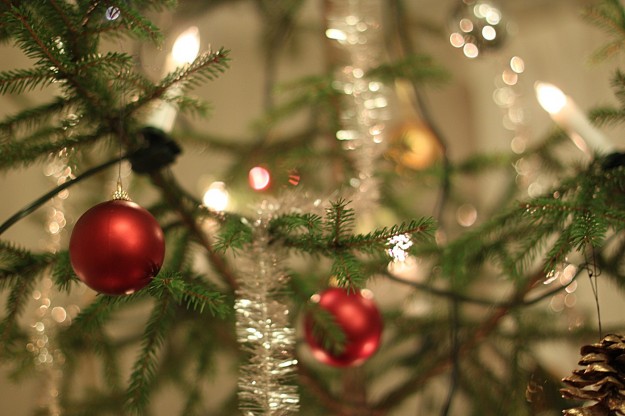
Links - 2009 Dec 24
Cake
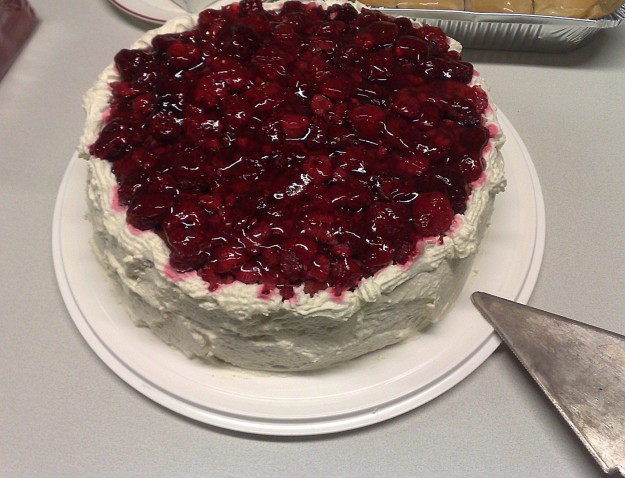
and Brandy...

Polished PIKANTO hull mould
The PIKANTO moulds were polished first with "Oskar’s buffing and polishing compund M-50" and then with "Norpol Rubbing R-10", both from Terpol (www.terpol.fi) in Turku.
Shine mould, shine!
After sanding with 1200-grit and a 10-15um particle-size fine paper it is time for polishing. We have two grades of polishing-compound. These pics show the coarse type which is polished with a spinning soft disk on a power-drill.
After polishing follows release agents: first Frekote and then wax. It's still possible we will mould a prototype hull this year. Stay tuned.
